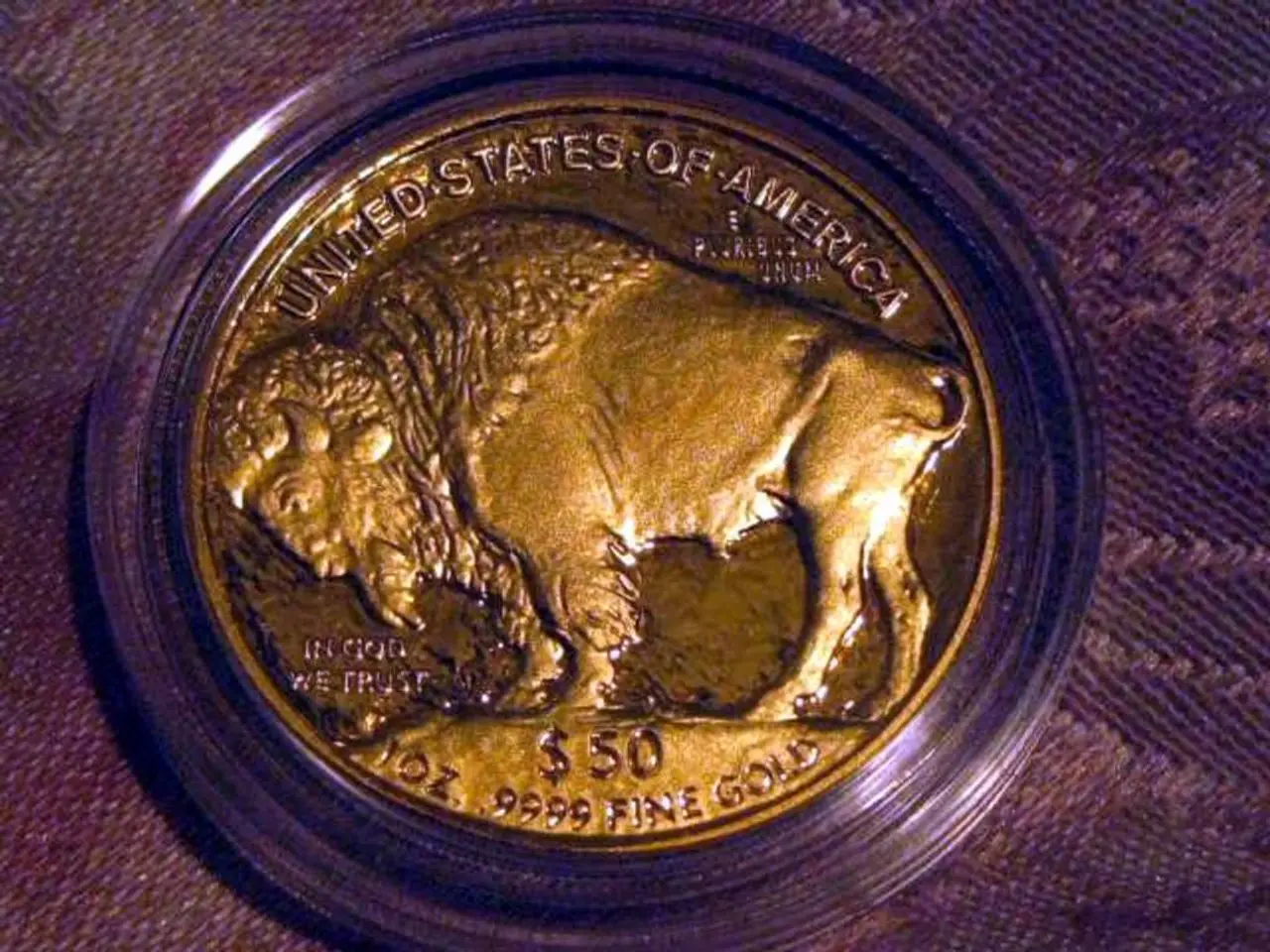Gold's Hidden Costs Examined: An Analysis by Goldenomics 102
Fort Knox, the famous bullion depository in Kentucky, is home to a significant amount of gold reserves for the United States. According to recent claims from the U.S. Treasury, the current gold holdings at Fort Knox are approximately 147 million troy ounces, valued at around $425 billion. This equates to about 50% of the total U.S. government gold reserves.
The gold reserves at Fort Knox have been a topic of interest for many years, with concerns about transparency and audit debates persisting. In fact, there has been no independent audit of the gold at Fort Knox for several decades, with the last full checks taking place in 1974 and 2017. Recent calls for renewed verification, including from Elon Musk and various politicians, have been made due to these transparency concerns.
The gold bull market of the 2000s saw the Gold Coverage Ratio (GCR) triple from 10.8% to 29.7%. A comparable GCR today would require the gold price to almost double to over $6,000. This raises questions about the potential value of Fort Knox's gold reserves if the gold price were to rise significantly.
The gold reserves at Fort Knox are not the only gold reserves held by the U.S. government. The Denver Mint and West Point also house a portion of the reserves. The exact percentage of total U.S. gold reserves at Fort Knox has been widely reported as approximately 50%.
The question of how much gold is held at Fort Knox and elsewhere is not just an academic one. It is important for various reasons, including potential budget cuts, a return to a gold standard, and the international monetary order. Economists like Judy Shelton have suggested a new international monetary order based on gold, while others like James Rickards have predicted gold prices reaching as high as $27,000 under a return to a gold standard.
In recent years, there have been several developments related to the gold reserves at Fort Knox. In March 2025, President Donald J. Trump stated that he would visit Fort Knox to check if the gold was there, implying concern about its existence. In May 2025, President Trump issued an executive order titled "Restoring Gold Standard Science." In July 2025, President Trump signed the GENIUS Act, which could be a step towards restoring the gold standard.
In conclusion, Fort Knox holds a significant amount of gold reserves for the United States, with approximately 147 million troy ounces currently in storage. The value of these reserves is estimated at around $425 billion. The exact percentage of total U.S. gold reserves at Fort Knox is approximately 50%, with the remaining reserves distributed among other locations like the Denver Mint and West Point. The gold reserves at Fort Knox have been a topic of interest for many years, with concerns about transparency and audit debates persisting. Recent developments, such as President Trump's executive orders and the signing of the GENIUS Act, suggest a renewed interest in the gold reserves and a potential return to a gold standard.
Investors who are interested in finance and investing may see potential value in Fort Knox's gold reserves, considering the rising interest in gold markets. The transparency concerns surrounding the gold reserves at Fort Knox have been the subject of debate for several decades, with no independent audit conducted for several decades.




